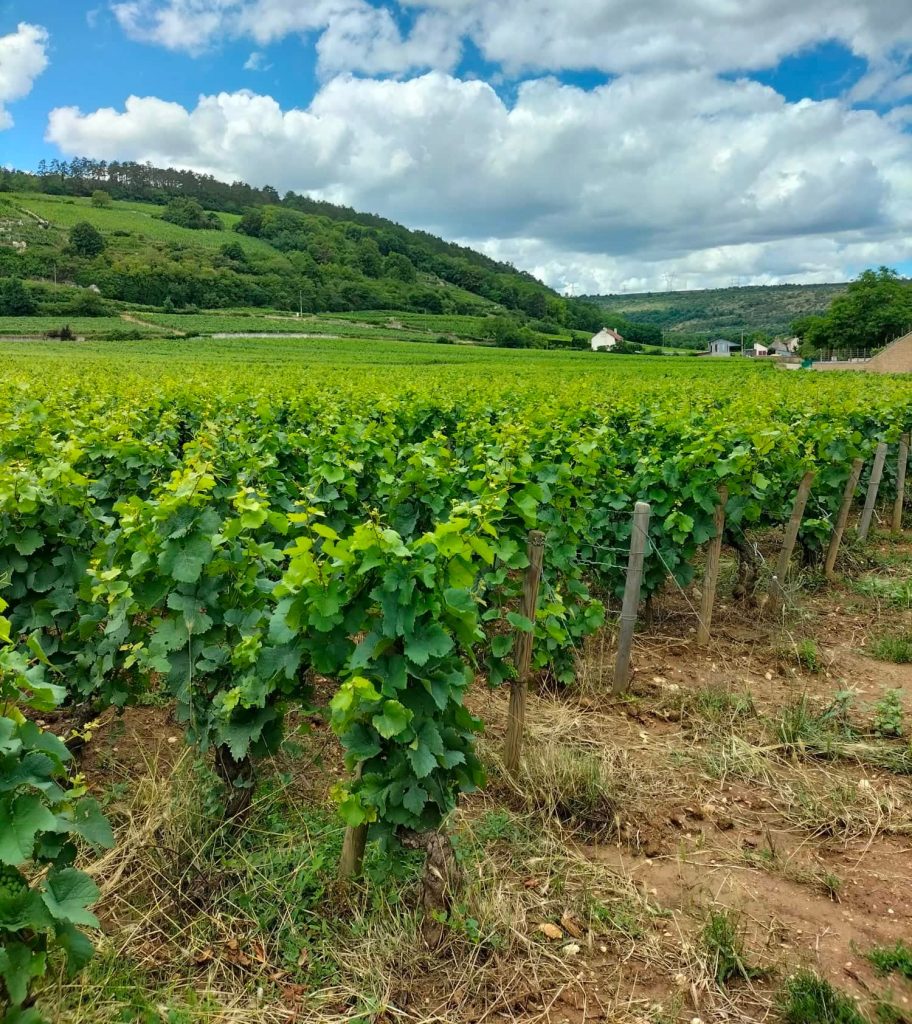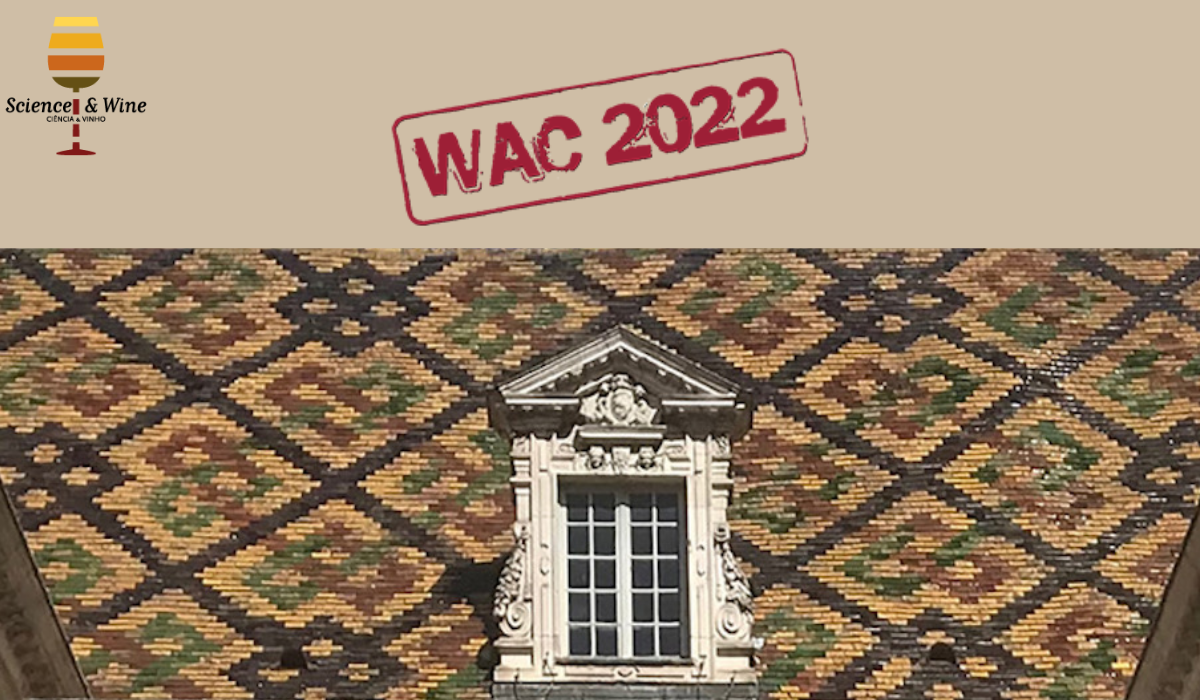By Paula Silva
After two successive postponements, the fifth edition of Wine Active Compounds (WAC) 2021 happened in the Palace of the Dukes of Burgundy in Dijon, France, from Wednesday June 29 to Friday July 1, 2022, under the auspices of the UNESCO Chair “Culture & Traditions of Wines” and the Institut Jules Guyot at University of Burgundy (https://ubwac.com/).
The international WAC conferences have become an essential meeting point for promoting interdisciplinarity in experimental and human and social sciences of vine and wine, considering active compounds related to viticulture, enology, their biological roles, and their taste/olfactory properties.
Professionals and scientists from various disciplines were present, WAC counted with nearly 150 attendees from more than 12 countries, which confirms its success.
The scientific program was divided in four different sessions:
- Viticultural practices and wine compounds
- Sensory perceptions of professionals and consumers
- Winemaking processes
- Compounds of biological interest, related to health
The “Viticulture practices and wine compounds” opened with the talk of Melane Vivier from Stellenbosch University South Africa, titled “Integrative grape to wine metabolite analyses to study the vineyard “memory” of wine”. In this talk she provided an overview of the genetic and genomic resources currently available for grapevine research and discusses the application of molecular tools to research into grape quality.

Figure 1.Vines property of Les Ursulines
Charles Spence, from Oxford University, open the session with the talk “Multisensory experiential wine marketing”. Charles Spence explored several issues as for example the pairing of wine with music. This pairing goes back a long way, starting out with commentators at first merely just using musical metaphors to describe the wines they were writing about. This invites speaker, shows that this area of interest has morphed into a growing range of multisensory tasting events in which wine and music are paired deliberately to assess, or increasingly to illustrate, the impact of the latter on people’s experience of the former. In his talk, Charles talk about this emerging field of research.

Figure 2. Charles Spence talk
The second day was fully dedicated to the session about “Winemaking processes”. The keynote of this session was given by Maurizio Ciani, affiliated in Polytechnic University Marche, Italy and was about “Non-Saccharomyces wine yeasts: emerging trends and challenges in winemaking”. Maurizio Ciani started by explaining that the evolution of native yeasts during spontaneous fermentation promotes-specific organoleptic characteristics; thereby, yeast biota can be considered an integral to distinct wine authenticity. Within this context, he shown us that several studies have been conducted to assess the numbers and the sustained presence of indigenous yeasts of non-Saccharomyces strains. According with the speaker research, even though S. cerevisiae remains the microorganism accredited for alcoholic fermentation, lately, there is a growing interest in the characterization of non-Saccharomyc strains that impact the fermentation process and the final wine character. Until the past decade, the latter species were considered as spoilage microorganisms of alcoholic fermentation both in white and red wines. Nevertheless, their role has been re-evaluated. Maurizio Ciani demonstrated that these indigenous strains comprise a research field that encounters with the positive impact in wine fermentation as novel biotechnological tools that confer a manifold role.
I had the honor of being invited to open the last session “Compounds of biological interest, related to health”. My talk was about “Health benefits of wine industry by-products”. I started my talk showing that a major part of phenols is in wine by-products, i.e., in grape pomace (skins, seeds and stalks), which is a great opportunity to the wine industry. This industry produces grape pomace in a very short period and in a large amount. Grape pomace is finding increasing applications as dietary supplements for disease prevention and for claims involving structure/function relationships.
Besides this exciting scientific program, the organization also provide all the participants a wonderful social one. The gala dinner, on Thursday June 30, a gala dinner was served in a renowned place in Dijon: in the reception cellar of the “Grand Hôtel de la Cloche” (https://hotel-lacloche.com/). In this gala dinner, the participants had the opportunity of tasting original variation of the French meal with amazing Burgundy wines.

Figure 3. Gala dinner, from the left to the right Marielle Adrian, Vincent Thomas, Jocelyne Pérard, Olivier Badoureaux, Anne Parent, Yann Juban, Paula Silva, Alfredo Silva
In the last afternoon, the participants had the opportunity to visit and tasting in a prestigious area of the Côte de Nuits, to listen and exchange with the winemaker to talk about his practices and taste some of these wines. I had the opportunity to visit Les Ursulines, a winery that belongs to Jean-Claude Boisset. Built according to the rules of the golden ratio, inspired by geobiology and sacred architecture, and oriented according to the trajectory of the sun and the cycles of the moon and the stars, the winery of Les Ursulines brings together cosmic and telluric energies. This place is imbued with both grandeur and humility, and dedicated to the production of their Burgundy wines, linking the earth to the sky, and the infinitely small to the infinitely great. The winery, which is entirely dedicated to the production of hand-stitched wines, was unveiled almost exactly 300 years after the construction of the first building of Les Ursulines in 1717 (https://www.jeanclaudeboisset.com/en/).

Figure 4.Les Ursulines
At the end it was announced that there is a great possibility to have a 6th Edition of WAC. We really hope so!

